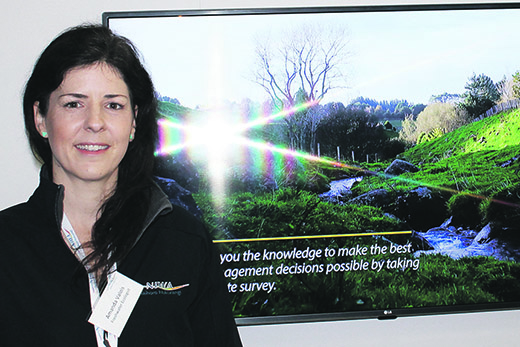Around New Zealand, landowners, community groups, councils, iwi and businesses are investing large amounts of time and money to restore degraded streams, mostly through fencing and planting of stream banks.
But very little is known about whether these investments in riparian areas result in the expected benefits, says Amanda Valois, freshwater ecologist at NIWA in Hamilton.
“What we do know is that some riparian restoration projects lead to rapid ecological recovery and others seem less effective.”
To find out what’s going on, NIWA is undertaking a nationwide study with the ultimate aim of providing better guidance to the people and groups undertaking stream restoration.
“We have launched an online survey and had a great response to our request for information,” says Amanda.
The aim is to find out about existing buffers that differ in width and length, planting density, types of plants used, the time since planting and location relative to healthy streams.
Amanda Valois, freshwater ecologist at NIWA.
Scientific inquiry
“For this we need to know about as many projects as possible – where they are located and a few other details about them, which is where the online survey comes in.”
After as many riparian projects as possible have been recorded, NIWA will select a few of them and train, equip and support volunteers to monitor them.
Amanda says volunteer water monitoring (and citizen science as a whole) is a powerful force for scientific inquiry and ultimately will help make a positive difference to waterways.
Called the NZ Riparian Database Project, it is funded by the Ministry of Business, Innovation and Employment through the Strategic Science Investment Fund to NIWA.
Water quality
Amanda’s main research interest is in community-based water quality monitoring and how it can inform freshwater policy.
She is also interested in parasites and pathogens in the aquatic environment. Her PhD work focused on planktonic food-webs, researching the role of parasites in food-web ecology and how their dynamics were influenced by a variety of physical and biological variables.
Amanda is helping to dispel the myth that parasites are an “unhealthy” part of ecosystems. Her work on aquatic pathogens covers a broad range of groups from fungal parasites in zooplankton to trematodes in snails to E. coli bacteria dynamics during flood events.
Amanda has a particular interest in all things without a backbone and has undertaken a number of taxonomic studies on zooplankton, benthic invertebrates, and mosquitos.



0 Comments
Leave a Comment